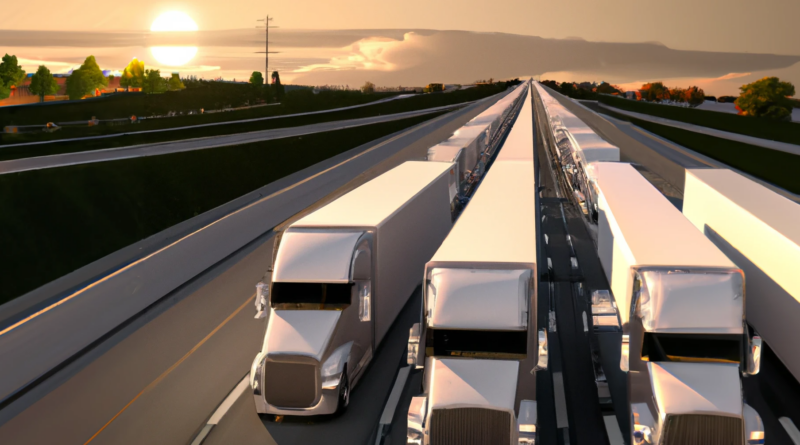Buses, Trucks, Trains, Shipping, & Aviation Will Electrify More Than US Transportation Blueprint Thinks
 Sign up for daily news updates from CleanTechnica on email. Or follow us on Google News!
Sign up for daily news updates from CleanTechnica on email. Or follow us on Google News!
Last Updated on: 12th November 2023, 03:39 pm
The US published a transportation blueprint recently. It has two big chunks. The first deals with shifting transportation to lower carbon models through urban densification and strategies to push freight to rail and water. Another assessment deals with that subject. But the second half of the blueprint is how to decarbonize the modes of transportation without regard for the shifts to better models. And so to refueling different transportation modes.
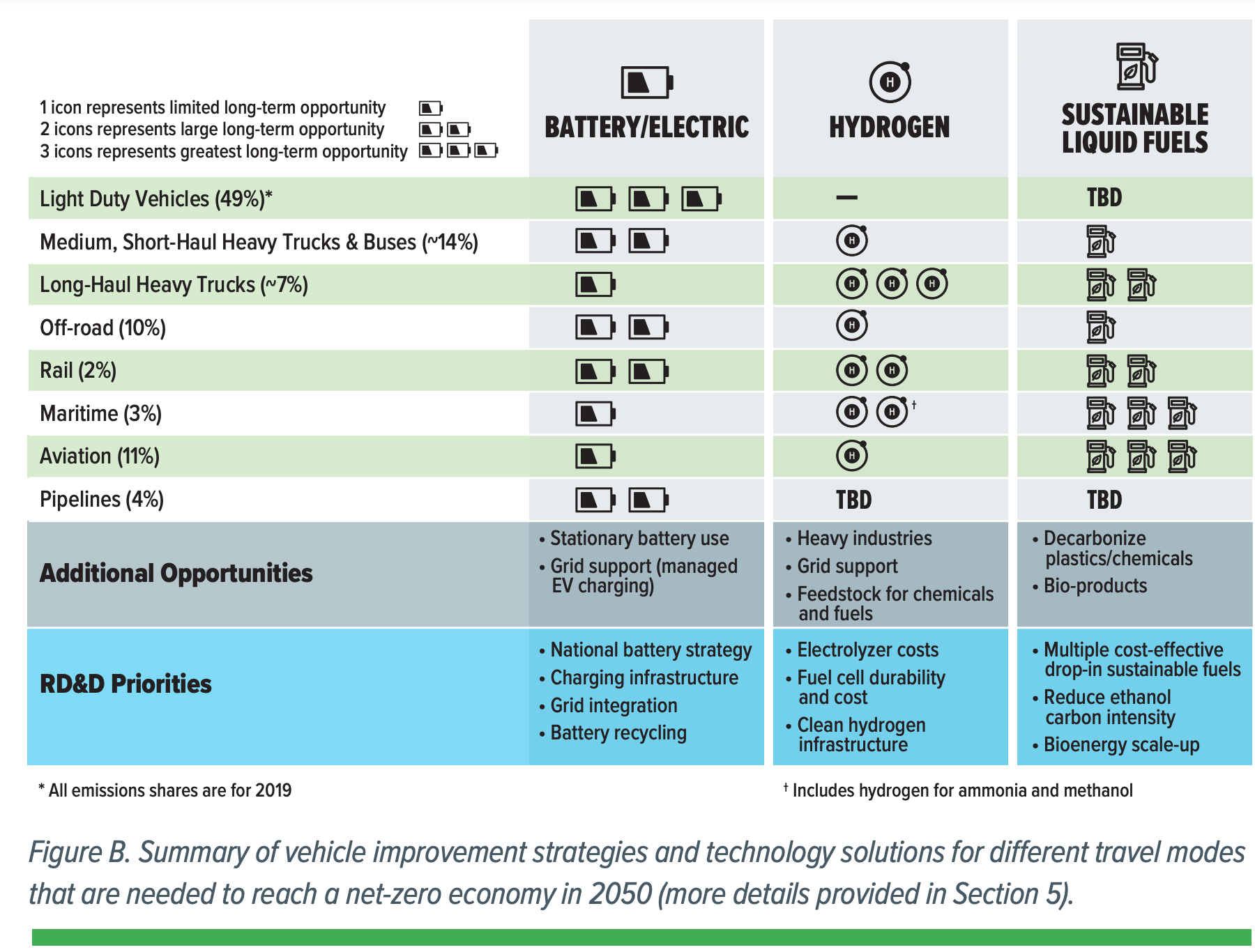
There’s good news here despite the clear problems with the primary visual: the details of the document lean a lot less heavily on hydrogen than this summary chart. The sustainable burnable fuels in the details are mostly biofuels, not synthetic fuels, so the number crunchers appear to have realized that manufacturing fuels from the molecules up is always going to be more expensive than letting nature do most of the heavy lifting. That’s something, although the IRA subsidizing green hydrogen for transportation and other uses heavily is a bit contrarian. But the blueprint is still weighting burnable gases and liquids vastly more strongly than electrification.
One clear win is that hydrogen and sustainable burnable fuels for light vehicles are finally off of the table. Battery-electric for the win. That’s taken years longer than it should have, and there are still die-hards, but this transportation strategy gets that right at least. No more corn ethanol blended with gasoline in a pretense of environmental virtue.
Then there’s light trucking and buses. Mostly electric, but with both hydrogen and sustainable fuels represented. There are a couple of data points to make clear what the global leading practice is: China has 600,000 electric buses on the roads of its cities and there are over 400,000 electric trucks doing everything from garbage collection to servicing parks to hauling freight. Here’s another data point: Pepsi already is shipping loads of its carbonated, sugar-laden battery acid 400 miles to warehouses with the Tesla Semi.
All buses and short- and medium-haul trucks are going to be battery-electric. This decision has been reached globally, and the US transportation blueprint refuses to accept the memo. It’s unclear why, but I would suspect US bus and truck manufacturers have no ability to build the trucks of the future and are lobbying hard to continue to build the trucks and buses of the past. And so there’s going to be a fair amount of time and money wasted on hydrogen and biofuels for this portion of transportation instead of a useful full court press to electrify. Hopefully this is a timing concern, not an end state intent.
Long-haul heavy trucks are going to go battery-electric too, although biofuels could be a bridge. However, biofuels are necessary for actually hard to decarbonize segments of longer haul aviation and marine shipping, so wasting them on trucking is a head-scratcher when there isn’t nearly enough to go around yet and for a couple of decades to come. But since the US refuses to face its rail problem and trucks move a lot more freight long distances that are just starting to be viable for batteries, it’s easy to understand why they are doing somewhat irrational things.
A better blueprint wouldn’t have platitudes about mode-shifting to water and rail, but clarity on what is preventing that and strong actions to deal with it. It doesn’t, so road freight will continue to dominate longer distance transportation. Some catenary overhead on key interstate segments, something that’s not unusual in Europe, would go a long way to making long-haul road freight viable quickly, but is deeply unlikely.
That said, road freight operators aren’t stupid or bad at math. Their spreadsheet jockeys will run the numbers. They’ll look at the ease of putting up massive chargers compared to trying to get hydrogen anywhere or to source sufficient biofuels. They’ll look at the much cheaper cost per mile of electric drive trains. And the biggies will be buying as many of the longest range electric trucks they can and swapping out the batteries every 3-5 years to make them longer range. Despite the blueprint, long-haul trucking will electrify.
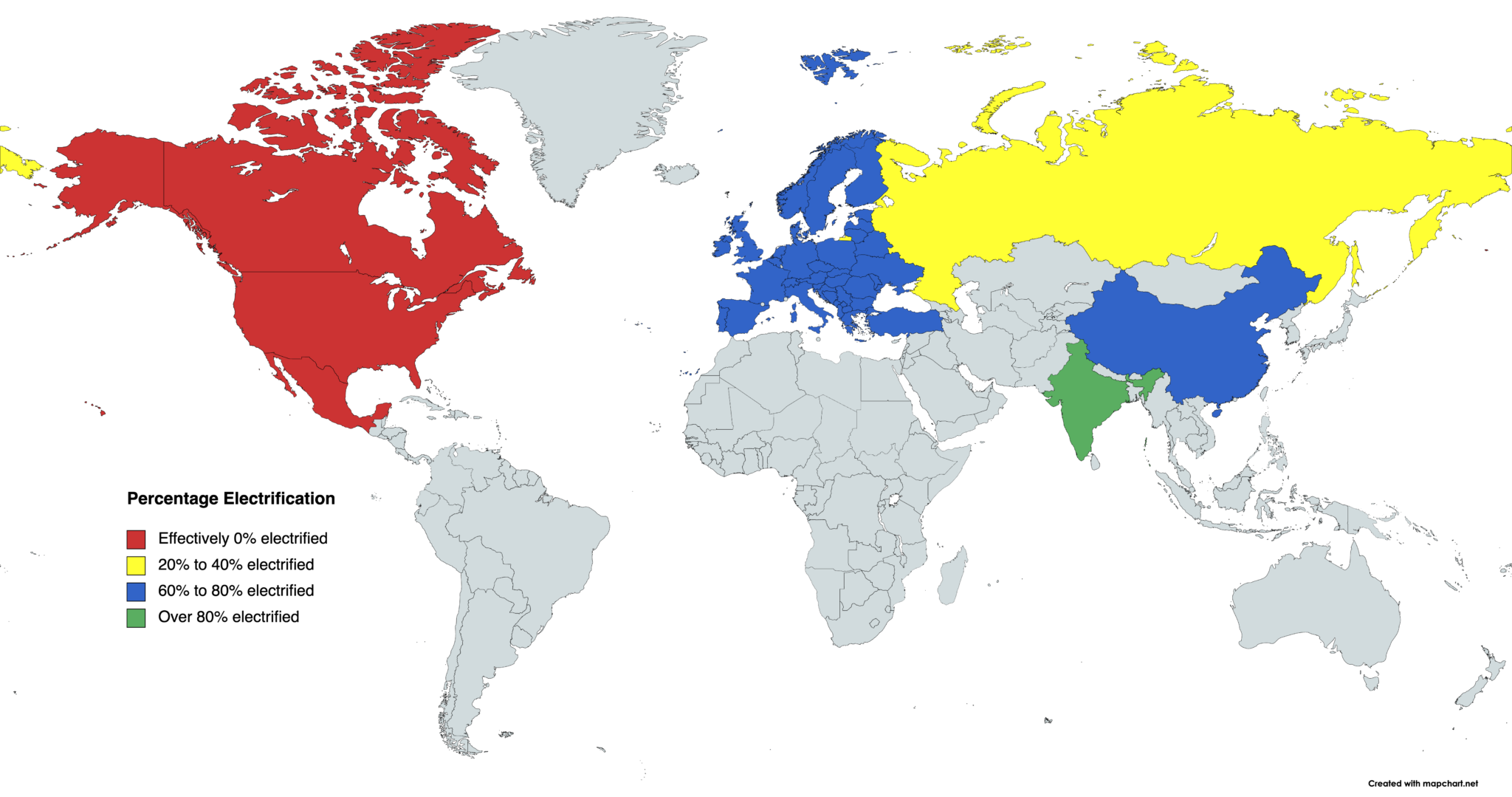
Rail, as I pointed out in a recent global comparison, should be electrifying but likely won’t. The rest of the world understands this and is electrifying rapidly, in conditions that include similar extremes of weather, topography, existing infrastructure, and sparsely populated areas. US rail is in private hands, about 700 pairs of them apparently, and as a result there’s about twice as much rail as necessary receiving on average half the revenue, and so there’s much less money to spend on each mile.
But the DOT appears to believe the nonsense the Association of American Railroads is spouting, that American rail is somehow unique, without ever admitting that its uniqueness is in its ownership model and lack of coherence and efficiency as a result, not in any way that the AAR claims.
An effective policy would be to cut the miles of rail in half, electrify the 80% or so that’s necessary to electrify, and use batteries in standard containers plugged into locomotives to bridge the gaps. Instead, rail is going to be stuck with biofuels which will increase their fuel costs while road trucking goes with cheaper electrons. And, of course, hydrogen has no play in rail despite pretenses and experiments otherwise. One of Germany’s wealthiest and most influential provinces recently announced the results of its hands-on testing, which is that hydrogen would be three times as expensive as grid-tied and battery/grid-tied hybrid models.
Lots of bankruptcies in rail in the coming years, especially as bulk shipping of fossil fuels disappears. Coal trains will disappear, and that’s 4 million cars a year. 91,000 carloads of crude oil will disappear. LNG by rail will never occur. More and more freight of all types will be containerized and moved by road freight which will be cheaper because it will be electrified, not paying a premium for burnable fuels. And with lower revenues per mile of track, the death spiral of reduced maintenance will mean more derailments like Ohio’s recent disaster. More threats to American citizens’ health, not fewer.
With luck, Canada and Mexico might go their own way. Mexico might dust off its abandoned catenary freight corridor and finish it. Canada might build the energy corridor that makes sense, HVDC along electrified freight rail lines from sea to shining sea, with container batteries getting trains across bridges and through tunnels. But if the US persists in having a bloated, poorly maintained rail system burning fuels to move around, it’s unlikely that Canada and Mexico will be able to transition. The hundreds of thousands of freight locomotives cross borders constantly and spend most of their time in the US, so it’s very hard for the tails to wag the dog.
It will be wasteful of energy, US emissions won’t drop as rapidly as they could, and the US economy will suffer competitive disadvantages to the rest of the world which has well used electrified rail and inland shipping. But once again, what the world cares about is decarbonization, not the US economy. I would suspect that the US transportation blueprint should care about the US economy, but I won’t lose any sleep over that part of the equation.
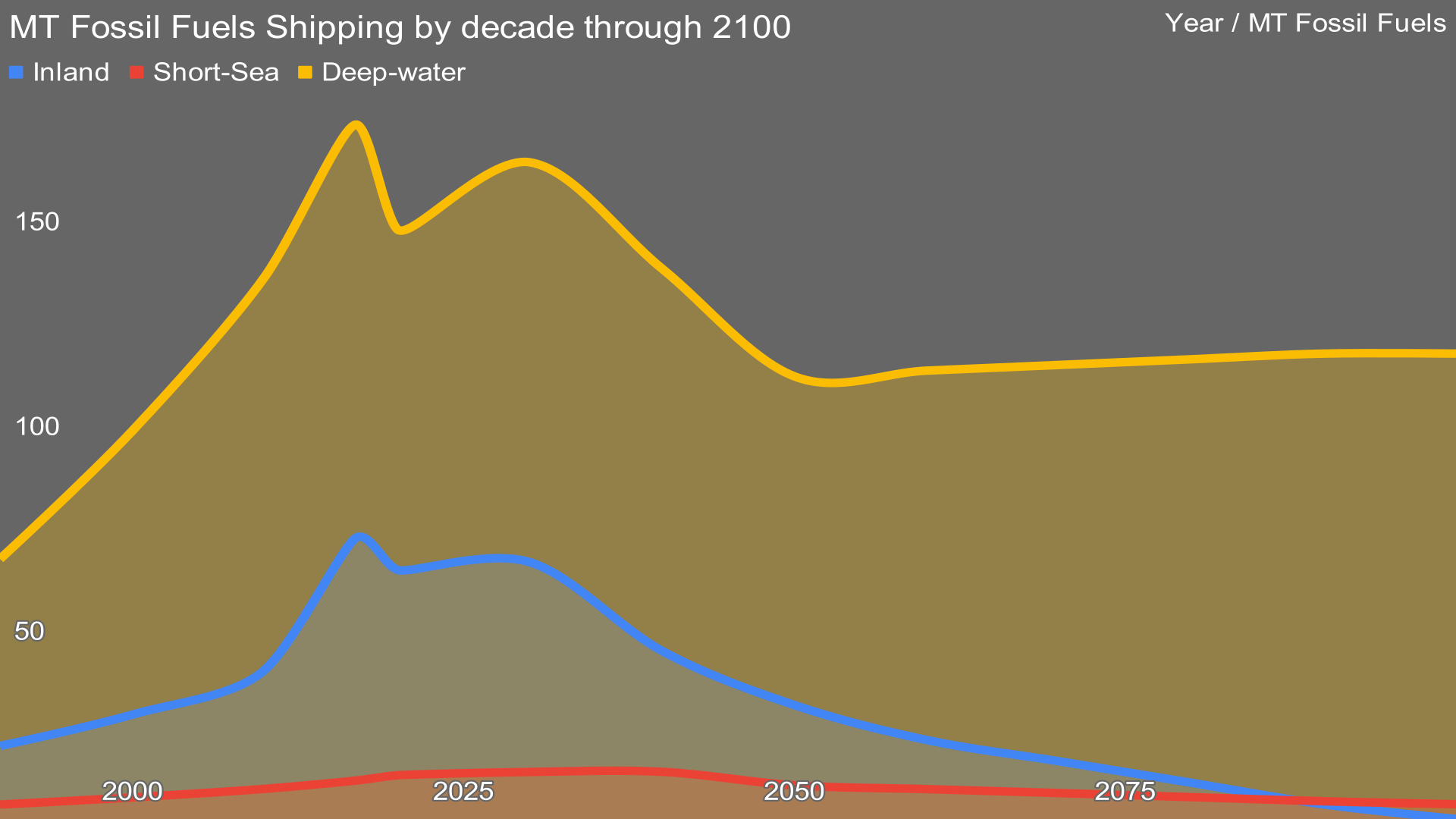
Next, there’s maritime shipping. The blueprint has a bit of electrification, more hydrogen, and is mostly biofuels. I project a lot more electrification, no hydrogen, and then biofuels only for longer haul near sea and deepwater shipping, along with an increasingly rapid shift to container shipping. With peak coal demand in the rear view mirror, peak oil demand likely arriving before 2030 and peak natural gas in the middle of the coming decade, bulk shipping is going to drop rapidly. US shale oil and LNG are expensive by global standards and so will increasingly only be used for domestic markets, not shipped internationally as cheaper providers pick up more of the declining market. The huge US coal reserves will just stay in the ground. As noted, inland and coastal shipping has dropped a lot in the US and likely isn’t coming back, but it will electrify fully over the coming decades.
Biofuels will be used, and as I pointed out recently, they are fit for purpose, they will remain a lot cheaper than hydrogen or synthetic fuels and there are eight pathways to making them that don’t interfere with growing food. We have enough of them for longer haul aviation and shipping. They even burn more cleanly than fossil fuels that they replace. But we can’t build enough biofuel capacity quickly enough to put the stuff in every mode of transportation except light trucks. It has to be used in modes where electrification won’t cut it.
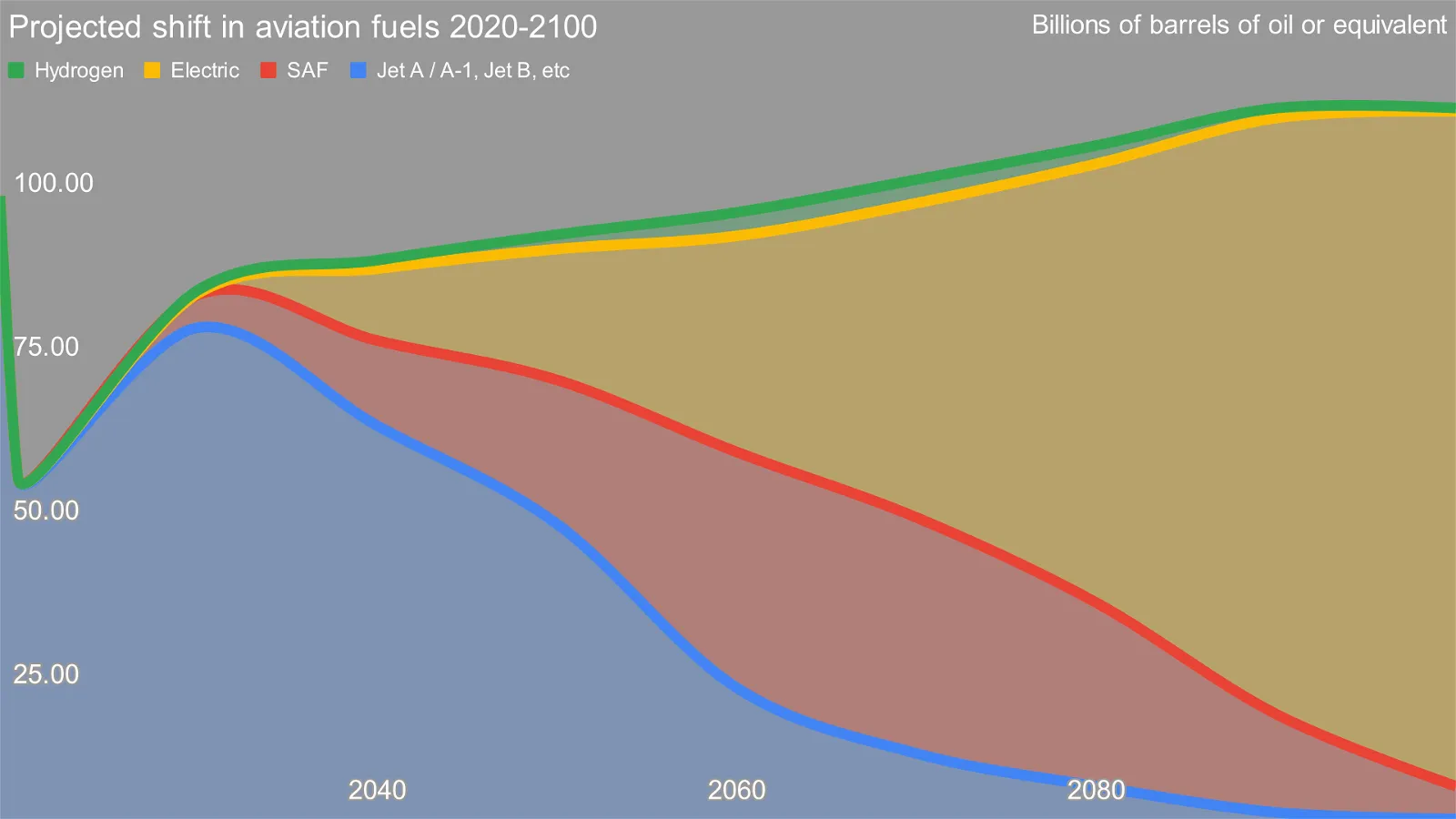
Then there’s aviation. Demand won’t be rising as fast as the industry likes to assert. In the US, the post-COVID rebound will occur. But the relative economic stagnation for 60% to 80% of the populace and the reality of more expensive air travel as fuel prices increase as decarbonization occurs will dampen demand. Americans may not have much choice for getting around the country, and far fewer of them leave the country compared to other developed nations, but that doesn’t mean that when it comes to the rent or a Florida trip that they’ll be paying for flights.
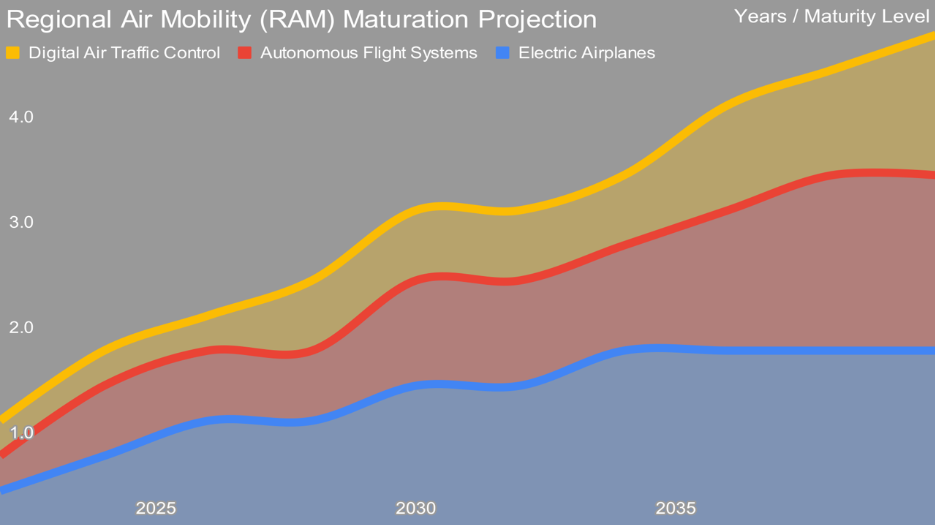
Battery-electric aviation will unlock regional air mobility, as will increasing autonomous flights starting with heavy drones out of line of sight and small cargo flights, as will the eventual implementation of digital air traffic control. The combination means a lot more shorter flights between regional airports, with the lower operating costs of battery-electric airplanes making new (or old) business models viable. Current battery energy density is already fit for purpose for pure electric small planes and hybrid electric turboprops from 4 to 100 passengers, and there are multiple OEMs working to bring those battery-oriented airframes to market. That’s going to shift the market substantially.
But hub and spoke passenger jets are going to require burnable fuels for decades, and biofuels will be the answer there. So the blueprint isn’t terribly off except in having any role for hydrogen in the space. Some biofuel pathways use hydrogen to supplement the output, but many don’t and green hydrogen will always be expensive so pathways that use it won’t be as competitive.
Finally we get to pipelines. This one is fascinating. There are three million miles of pipelines in the US. What do they carry? Virtually all of them carry fossil fuels, and the ones that aren’t carrying fossil fuels are carrying substances used in the fossil fuel industry, like CO2 for enhanced oil recovery. With peak oil demand likely coming later this decade, natural gas peak demand next decade, all ground transportation electrifying, and biofuels being a fraction of fossil fuel volumes, most of these pipelines are just going to be ripped up in the coming decades. Decarbonizing them doesn’t make nearly as much sense as eliminating the need for them. The blueprint misses that harsh reality.
I wrote an assessment of the US transportation blueprint six weeks ago, but sadly it disappeared into digital limbo. That’s okay, my initial assessment was more favorable. Subsequently I’ve spent a lot more time looking at the variance between US rail and the rest of the world, and closing on my biofuels vs synthetic fuels for marine shipping opinion. As a result, my assessment of the quality of the blueprint is that it’s an adequate political document but doesn’t face hard truths about transportation in the US, and as a result will not get the job done.
But as I pointed out time after time, while the US will waste a lot of time, money, and energy on sub-optimal decarbonizing transportation approaches and end up less competitive as a result, most US transportation will decarbonize regardless, and that’s what the world cares about.
Chip in a few dollars a month to help support independent cleantech coverage that helps to accelerate the cleantech revolution!
Have a tip for CleanTechnica? Want to advertise? Want to suggest a guest for our CleanTech Talk podcast? Contact us here.
Sign up for our daily newsletter for 15 new cleantech stories a day. Or sign up for our weekly one if daily is too frequent.
CleanTechnica uses affiliate links. See our policy here.
CleanTechnica's Comment Policy

